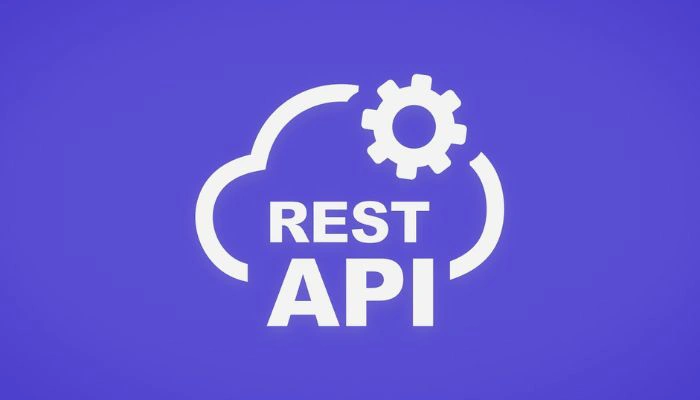How to Migrate Your Business to the Cloud Safely
Businesses are constantly seeking ways to enhance efficiency, reduce costs, and foster innovation. The allure of cloud computing, with its promise of scalability, flexibility, and global accessibility, is undeniable. However, the prospect of moving an entire business infrastructure, including sensitive data and critical applications, can seem daunting. Many organizations hesitate, fearing data breaches, compliance pitfalls, or disruptive downtime.
This comprehensive guide will demystify the process, demonstrating precisely how to migrate your business to the cloud safely. We will explore the critical steps, best practices, and essential considerations to ensure a smooth, secure, and successful transition. By addressing potential challenges head-on and providing actionable strategies, this article aims to equip business leaders and IT professionals with the knowledge needed to confidently embrace cloud migration while safeguarding their valuable assets.
Read on to discover how a meticulously planned and executed cloud migration can unlock significant benefits for your organization, from enhanced security postures to unprecedented operational agility, all while ensuring your valuable data remains protected and compliant.
How to Migrate Your Business to the Cloud Safely
The journey to migrate your business to the cloud safely begins with meticulous planning. This initial phase is paramount for mitigating risks, optimizing resource allocation, and setting clear objectives for the entire migration process. A well-defined strategy acts as your roadmap, guiding every subsequent step and ensuring alignment with your business goals.

Firstly, a thorough assessment of your current IT infrastructure is essential. This involves identifying all applications, data, and systems, understanding their interdependencies, and evaluating their suitability for cloud migration. Not every application is a perfect fit for the cloud "as is." Some might benefit from re-platforming, while others could require re-architecting or even retirement. This assessment should also include a comprehensive inventory of your data, classifying it by sensitivity and compliance requirements.
Next, define clear, measurable objectives for your cloud migration. Are you aiming for cost reduction, improved scalability, enhanced security, faster time-to-market, or a combination of these? Quantifying these goals will help you select the most appropriate cloud services and providers, and measure the success of your migration. For instance, if cost savings are a primary driver, you'll want to focus on optimizing cloud resource consumption from the outset.
Finally, choose the right cloud migration strategy. The "6 Rs" of cloud migration (Rehost, Replatform, Refactor, Rearchitect, Repurchase, Retire, Retain) offer different approaches, each with its own benefits and complexities. "Rehosting," also known as "lift and shift," involves moving applications to the cloud with minimal changes, offering speed and simplicity. "Refactoring" or "rearchitecting" involves modifying applications to leverage cloud-native features, offering greater scalability and efficiency in the long run. The choice depends on your business needs, existing infrastructure, and available resources.
Choosing the Right Cloud Provider and Deployment Model for a Secure Transition
Selecting the appropriate cloud provider and deployment model is a pivotal decision when you aim to migrate your business to the cloud safely. This choice directly impacts the security, performance, and cost-effectiveness of your cloud environment. The landscape of cloud providers is diverse, with major players like Amazon Web Services (AWS), Microsoft Azure, and Google Cloud Platform (GCP), alongside numerous niche providers.

When evaluating cloud providers, prioritize those with robust security features, industry-recognized compliance certifications (e.g., ISO 27001, SOC 2, GDPR, HIPAA), and a strong track record of reliability. It's crucial to understand the shared responsibility model, where the cloud provider secures the underlying infrastructure, but you remain responsible for securing your data, applications, and configurations within that environment.
Consider the various cloud deployment models:
- Public Cloud: Services are delivered over the internet by a third-party provider, offering high scalability and cost-efficiency. Ideal for non-sensitive data and applications with fluctuating demands.
- Private Cloud: Dedicated cloud infrastructure for a single organization, offering greater control and security, often for highly sensitive data or specific compliance needs. Can be on-premises or hosted by a third party.
- Hybrid Cloud: A combination of public and private cloud environments, allowing businesses to leverage the benefits of both. This model offers flexibility for workloads with varying security and compliance requirements. For example, sensitive customer data might reside in a private cloud, while less sensitive public-facing applications run in the public cloud.
Here's a table summarizing key factors to consider when choosing a cloud provider:
| Feature/Consideration | Description | Importance for Secure Migration |
| Security Features | Encryption, access controls, threat detection, vulnerability management. | Paramount for protecting sensitive data. |
| Compliance & Certifications | Adherence to industry standards (GDPR, HIPAA, PCI DSS). | Essential for legal and regulatory adherence. |
| Data Residency | Geographic location of data centers. | Crucial for data sovereignty and compliance requirements. |
| Service Level Agreements (SLAs) | Guarantees on uptime, performance, and support. | Ensures business continuity and reliability. |
| Pricing Model | Transparent, predictable costs (pay-as-you-go, reserved instances, etc.). | Impacts overall cost-effectiveness and budgeting. |
| Integration Capabilities | Compatibility with existing systems and applications. | Facilitates a smooth transition and ongoing operations. |
| Support & Expertise | Availability and quality of technical support, migration assistance. | Critical for resolving issues and optimizing performance. |
How to Implement Security Measures During & After Cloud Migration
The security of your data is paramount throughout the cloud migration process and beyond. To truly migrate your business to the cloud safely, a comprehensive security framework must be implemented at every stage. This involves a multi-layered approach, addressing various potential vulnerabilities.

Key Security Best Practices:
- Data Encryption: Encrypt all data, both in transit (during migration) and at rest (in cloud storage). This is a fundamental safeguard against unauthorized access. Utilize strong encryption protocols provided by your cloud provider.
- Identity and Access Management (IAM): Implement robust IAM policies to control who has access to what resources. Employ the principle of least privilege, granting users and applications only the permissions necessary to perform their functions. Multi-factor authentication (MFA) should be mandatory for all accounts, especially administrative ones.
- Network Security: Configure virtual private clouds (VPCs) and network security groups to isolate your cloud resources and control traffic flow. Implement firewalls, intrusion detection/prevention systems (IDS/IPS), and DDoS protection.
- Vulnerability Management and Patching: Regularly scan your cloud environment for vulnerabilities and apply security patches promptly. This includes operating systems, applications, and any third-party software deployed in the cloud.
- Logging and Monitoring: Implement comprehensive logging and monitoring solutions to track all activities within your cloud environment. This enables early detection of suspicious behavior, security incidents, and potential misconfigurations. Set up alerts for critical events.
- Regular Security Audits and Penetration Testing: Conduct periodic security audits and penetration tests to identify weaknesses in your cloud security posture. This proactive approach helps in uncovering vulnerabilities before they can be exploited by malicious actors.
Data Privacy and Compliance in the Cloud
Beyond general security, data privacy and compliance are non-negotiable when you aim to migrate your business to the cloud safely. Depending on your industry and the geographical locations of your customers, you may be subject to various regulations such as GDPR (General Data Protection Regulation), HIPAA (Health Insurance Portability and Accountability Act), PCI DSS (Payment Card Industry Data Security Standard), and more.
Before migrating, conduct a thorough data classification exercise to understand which data falls under specific regulatory frameworks. Engage with legal and compliance teams to interpret these requirements in the context of cloud computing. Your chosen cloud provider should offer services and certifications that align with your compliance needs.
Key considerations for data privacy and compliance:
- Data Residency: Understand where your data will be physically stored by the cloud provider. Some regulations require data to reside within specific geographical boundaries.
- Data Processing Agreements (DPAs): Ensure you have a clear DPA with your cloud provider that outlines their responsibilities in protecting your data and adhering to relevant privacy regulations.
- Audit Trails and Reporting: The cloud environment should provide robust audit trails that demonstrate compliance with regulatory requirements. Be able to generate reports for auditors.
- Privacy by Design: Incorporate privacy considerations into the design of your cloud applications and systems from the outset. This means minimizing data collection, anonymizing data where possible, and building in mechanisms for data subject rights (e.g., right to access, right to erasure).
- Incident Response Planning: Develop a clear incident response plan specifically for cloud-based security breaches or data privacy incidents. This plan should outline roles, responsibilities, communication protocols, and remediation steps.
Post-Migration Optimization and Continuous Improvement

Migrating to the cloud is not a one-time event; it's an ongoing journey of optimization and continuous improvement. To truly reap the long-term benefits and continue to migrate your business to the cloud safely and efficiently, post-migration activities are crucial.
- Performance Monitoring and Optimization: Continuously monitor the performance of your cloud applications and infrastructure. Identify bottlenecks, optimize resource allocation, and leverage auto-scaling capabilities to ensure optimal performance and cost efficiency.
- Cost Management: Actively manage your cloud spending. Utilize cloud cost management tools to track usage, identify idle resources, and implement cost-saving measures. Regularly review your cloud subscriptions and adjust them as your needs evolve.
- Security Posture Management: Cloud security is an ongoing process. Regularly review your security configurations, update access policies, and stay informed about emerging threats and vulnerabilities. Leverage cloud security posture management (CSPM) tools to automate security checks and ensure continuous compliance.
- Automation: Embrace automation wherever possible, from infrastructure provisioning to deployment and monitoring. Infrastructure as Code (IaC) can help ensure consistency, reduce manual errors, and accelerate future deployments.
- Training and Education: Keep your team updated on the latest cloud technologies, best practices, and security measures. Continuous learning is essential in the dynamic cloud environment.
Conclusion
Migrating your business to the cloud is a transformative endeavor that offers immense potential for growth, innovation, and operational efficiency. By diligently following a well-defined plan, prioritizing robust security measures, and meticulously addressing data privacy and compliance requirements, you can migrate your business to the cloud safely and confidently. From the initial assessment and planning to choosing the right provider, implementing strong security controls, and embracing ongoing optimization, each step contributes to a seamless and successful transition. By investing in a secure cloud migration, businesses can unlock unparalleled scalability, resilience, and agility, positioning themselves for sustained success in the digital age. Embrace the cloud journey, and empower your organization to thrive in a secure and flexible environment.
Ready to unlock the full potential of cloud computing for your business? Contact a reputable cloud migration specialist today, like Guru Solutions, to begin your secure and efficient transition!









